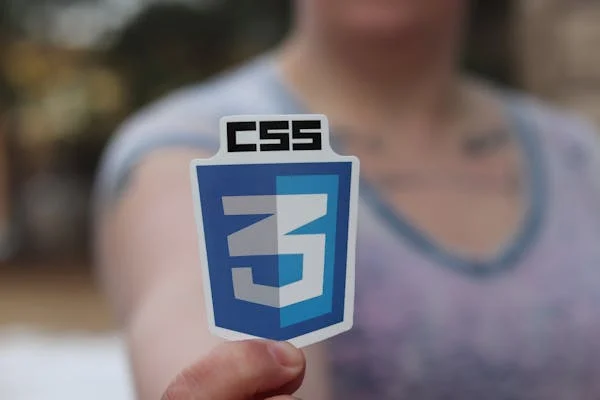CSS frameworks have become essential tools for web developers, streamlining the process of building responsive, stylish websites. Two of the most popular options today are Bootstrap and Tailwind CSS. But which one is right for your project? In this blog, we’ll compare Bootstrap vs. Tailwind CSS, breaking down their features, strengths, and weaknesses to help you decide which CSS framework fits your needs.
What is Bootstrap?
Bootstrap, originally created by Twitter in 2011, is a widely-used, component-based CSS framework. It’s designed to help developers quickly build responsive websites with minimal effort. Want to master it? Check out this Udemy course to learn Bootstrap 3 and build sleek websites fast—use code BOOTSTRAP2025 for a discount!
Core Features of Bootstrap
- Pre-designed Components: Buttons, modals, navbars, forms, and more are ready out of the box.
- Grid System: A powerful, flexible grid for responsive layouts.
- JavaScript Plugins: Built-in interactivity (e.g., carousels, tooltips).
Strengths
- Ease of Use: Perfect for beginners or projects needing fast results.
- Rapid Prototyping: Pre-built components speed up development.
- Large Community: Extensive documentation and support.
Weaknesses
- Heavy File Size: Can bloat your project if unused styles aren’t removed.
- Less Flexibility: Customization can feel limited.
- “Bootstrap Look”: Sites often look similar without heavy tweaking.
What is Tailwind CSS?
Tailwind CSS, a newer player launched in 2017, takes a utility-first approach. Instead of pre-styled components, it provides low-level utility classes to build custom designs from scratch.
Core Features of Tailwind CSS
- Utility Classes: Control padding, margins, colors, and more with concise classes (e.g., p-4, text-blue-500).
- Highly Customizable: Tailor every aspect of your design.
- Lightweight: Pair it with PurgeCSS to remove unused styles for smaller builds.
Strengths
- Flexibility: Create unique designs without fighting defaults.
- Performance: Optimized builds improve site speed.
- Modern Workflow: Fits well with frameworks like React or Vue.
Weaknesses
- Steeper Learning Curve: Requires familiarity with its system.
- Verbose HTML: Classes can pile up, making code look cluttered.
- Setup Required: Needs configuration for optimal use.
Key Differences Between Bootstrap and Tailwind CSS
When choosing between Bootstrap and Tailwind CSS, understanding their core differences is crucial.
- Approach: Bootstrap offers pre-built components; Tailwind provides utility classes for custom builds.
- Customization: Bootstrap has predefined styles that are harder to override, while Tailwind gives you full control.
- File Size: Bootstrap’s default size is larger (around 150KB minified), whereas Tailwind can be trimmed to under 10KB with PurgeCSS.
- Learning Curve: Bootstrap is beginner-friendly; Tailwind demands more CSS knowledge.
- Community: Bootstrap’s mature ecosystem dwarfs Tailwind’s growing but smaller community.
When to Choose Bootstrap
Bootstrap shines in scenarios where speed and simplicity are priorities.
Ideal Use Cases
- Rapid Prototyping: Need a working site fast? Bootstrap’s components deliver.
- Small Teams: Less experienced developers can jump in easily.
- Standard Projects: Admin dashboards, simple landing pages, or blogs.
For example, if you’re building a quick MVP (minimum viable product) or a traditional business site, Bootstrap’s pre-made tools save time.
When to Choose Tailwind CSS
Tailwind CSS is perfect for developers who prioritize custom designs and performance.
Ideal Use Cases
- Custom Designs: Want a unique look? Tailwind’s flexibility excels here.
- Performance-Driven Projects: Smaller file sizes boost load times.
- Modern Web Apps: Pairs seamlessly with JavaScript frameworks.
Think bespoke landing pages or cutting-edge SaaS applications—Tailwind lets you craft pixel-perfect designs without compromise.
Practical Tips for Choosing Between Bootstrap and Tailwind CSS
Not sure which to pick? Ask yourself these questions:
1. Project Timeline: Need it done yesterday? Go with Bootstrap. Have time to tweak? Try Tailwind.
2. Team Expertise: New to CSS? Bootstrap’s simpler. Comfortable with CSS? Tailwind’s your friend.
3. Design Needs: Happy with standard layouts? Bootstrap works. Craving a custom aesthetic? Tailwind’s better.
4. Performance Goals: Is site speed critical? Tailwind’s lightweight builds win.
The trade-off? Bootstrap offers speed at the cost of originality, while Tailwind trades setup time for control.
Can You Combine Them?
Yes, technically! You could use Bootstrap’s grid and components alongside Tailwind’s utilities for styling. However, this might overcomplicate your workflow—choose one and stick to it for clarity.
Conclusion: Bootstrap or Tailwind CSS?
So, Bootstrap vs. Tailwind CSS—which one should you use? It depends on your goals. If you need a fast, reliable solution with minimal setup, Bootstrap is your go-to—jumpstart your skills with this Udemy course (code: BOOTSTRAP2025). If you want full creative control and a leaner final product, Tailwind CSS is the way forward.
The best way to decide? Experiment! Build a small project with each framework to see what clicks. Have thoughts on Bootstrap or Tailwind? Drop them in the comments—I’d love to hear your take!



